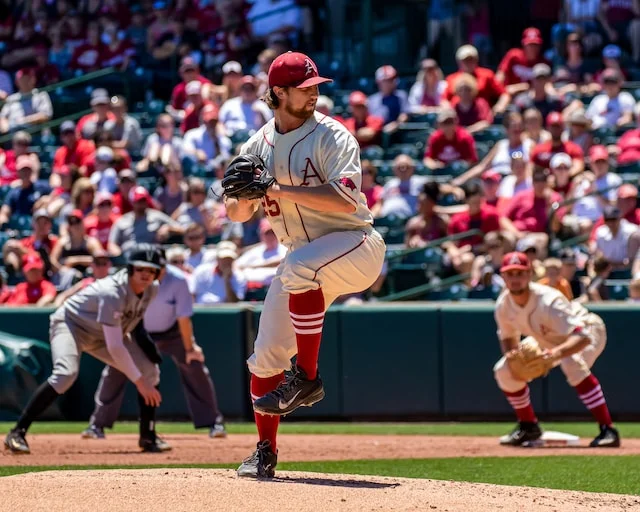As any and every fan knows, baseball is a game of statistics. Classic statistics like batting average, on base percentage and slugging percentage have been used to gauge a player’s offensive production for scores of years. When it comes to pitching, the classic stat has always been earned run average, or ERA, but in recent years, another stat has emerged as a way to better determine a pitcher’s level of production. This stat is walks plus hits per inning pitched, or WHIP.
To better understand WHIP and its effectiveness as a tool to measure a pitcher’s performance, let’s first look at a more common pitching stat: ERA.
Earned run average
Undoubtedly the most commonly used pitching stat is ERA. It’s likely the first number you’ll see when analysing a pitcher. When watching a televised game, ERA is usually the first statistic shown when a new pitcher enters the game. It is presented as a decimal, e.g., 3.45.
To put it simply, ERA is the average number of earned runs a pitcher allows per nine innings pitched. To determine this number, you divide the amount of earned runs a pitcher has allowed by the number of innings they’ve pitched, then multiply that number by nine.
What is an earned run? An earned run is a run that in no way could have been prevented by the defending team. If a player gets on base via a hit, walk, or hit by pitch and later comes around to score, that run is an earned run. Runs that are aided by a fielding error or passed ball are called unearned runs, as the pitcher has done nothing to earn the run. If a player gets on base via a fielding error and later comes around to score, that run is an unearned run. Unearned runs do not count toward a pitcher’s ERA.
The lower a pitcher’s ERA is, the better. Any ERA under 4.00 is considered good, while truly elite pitchers have ERAs under 3.00. In the live-ball era (post-1920), the all-time career ERA leader is Mariano Rivera, with a career ERA mark of 2.21.
ERA drawbacks
ERA has always been a reliable way to measure a pitcher’s effectiveness in terms of how many runs he gives up, but there are several reasons this may not be the most accurate way to measure a pitcher’s individual performance.
Of course, limiting runs is one of, if not the most important, roles a pitcher has. However, a pitcher could be constantly putting men on base without giving up runs. If a pitcher is always putting opposing players on base and having to get out of trouble, is he really an effective pitcher?
WHIP
Walks plus hits per inning pitched, or WHIP, is seen by many as a better way to measure a pitcher’s individual performance. With WHIP, runs are not factored in at all. Only three things are factored in: walks, hits, and the total number of innings pitched. Notably, the amount players allowed on base via hit-by-pitch is not included when calculating a pitcher’s WHIP.
Here’s the formula for WHIP:

with BB being walks, H being hits, and IP being innings pitched.
A player’s WHIP is presented as a number, generally with three decimal places. If a player’s WHIP is 1.000, that means he gives up exactly one walk or hit per inning pitched. Logically, the fewer walks or hits a pitcher allows, the better. The most elite pitchers in a season will generally have a WHIP near or below 1.000. In the live-ball era, the best career WHIP belongs to Jacob deGrom, who, through the 2022 season, has posted a career mark of 0.994.
By not limiting a pitcher’s performance to the number of earned runs that he allows, we can better understand a pitcher’s overall effectiveness. The statistics presented in a pitcher’s WHIP are more directly tied to the circumstances under his own control.
Conclusion
Which pitcher would you rather have on your team, the one who allows plenty of walks and hits but doesn’t allow many runs, or the one who rarely puts opposing players on base in the first place? Of course, a low ERA is an important statistic, but it is not the single most important pitching stat. Using both ERA and WHIP together to measure a pitcher’s effectiveness is the most ideal solution, as the best pitchers will have a low mark in both statistics.







